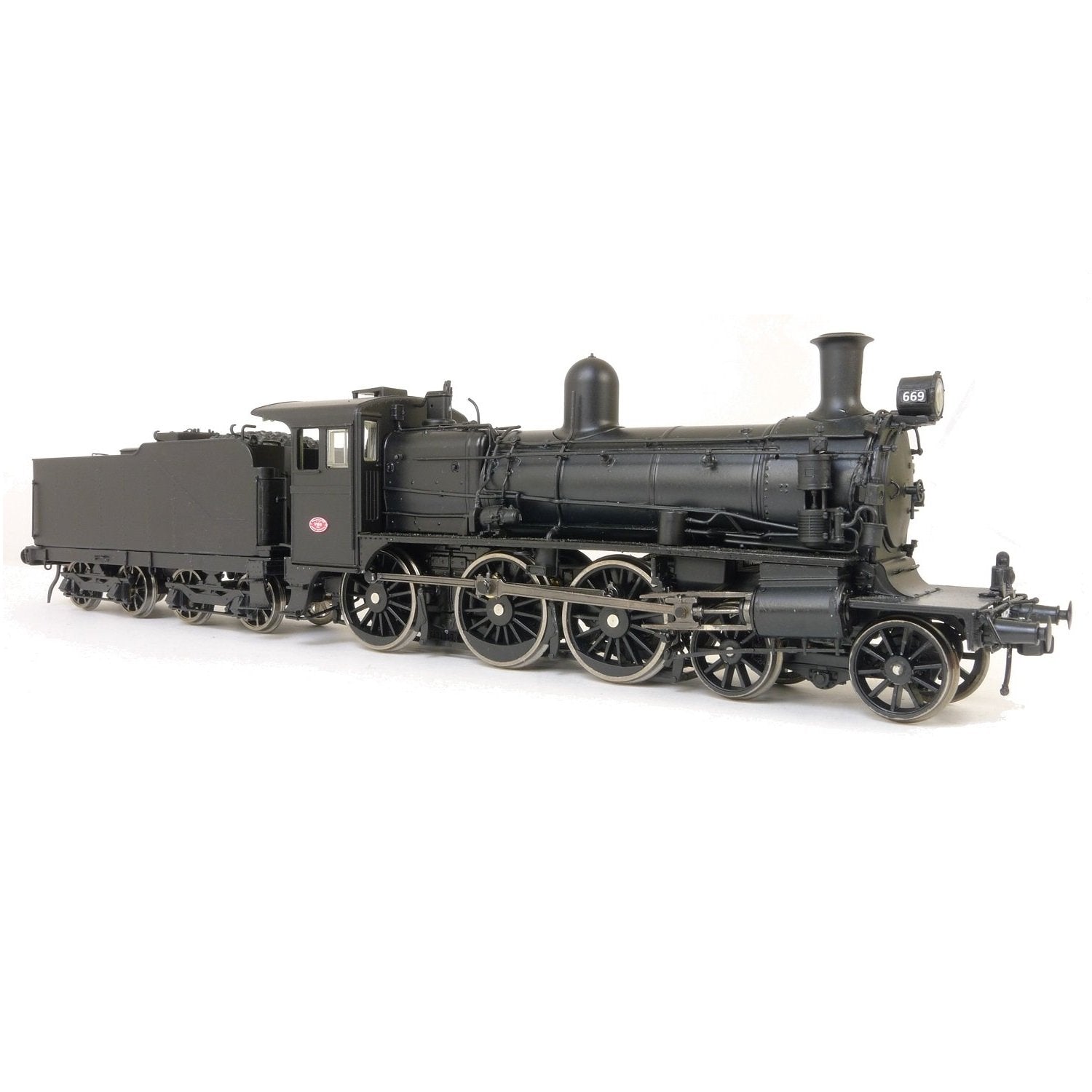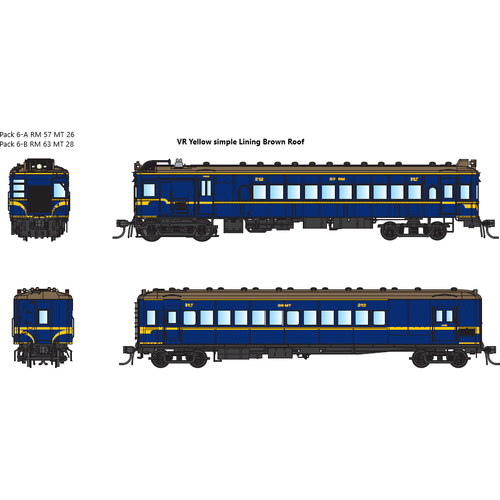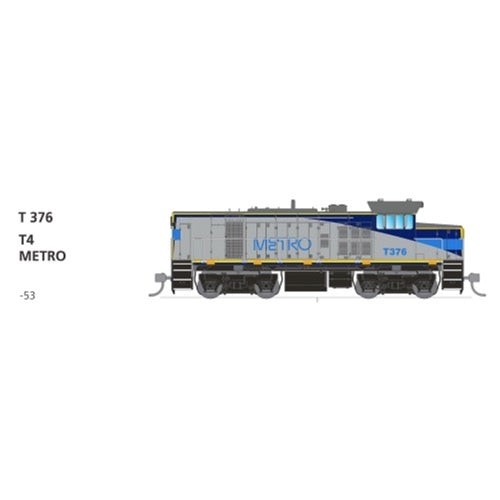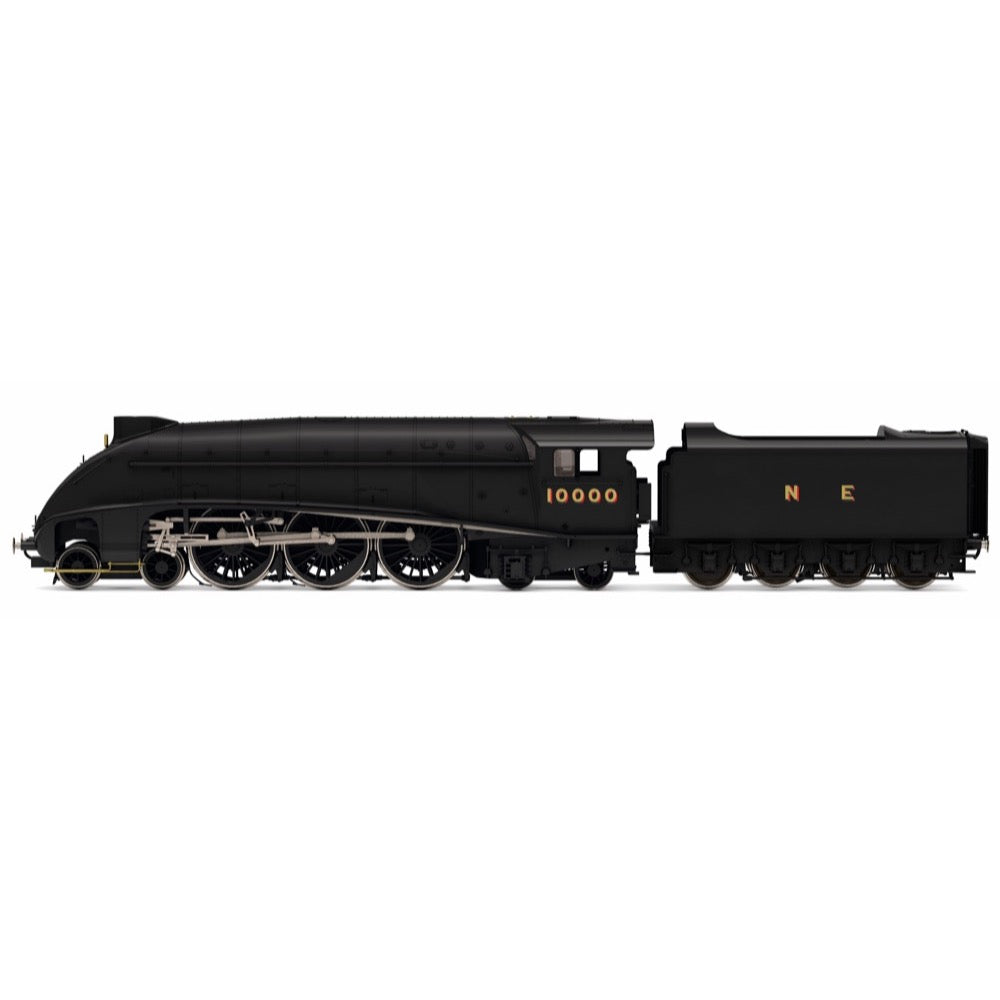
Hornby R30124 LNER W1 Class Hush Hush Streamlined 4-6-4 10000 1948 - 1956 Locomotive
166.00
$
<p>Sir Nigel Gresley's W1 4-6-4HP 10000 entered Darlington Works on 21st August 1935 for what was anticipated to be a major overhaul and modification. During this period Gresley decided to rebuild 10000 as a three-cylinder locomotive with a conventional firetube boiler. It was moved to Doncaster Works on 13th October 1936.</p><p>When 10000 was finally released from Doncaster Works in November 1937, it was a significantly different locomotive; fitted with a diagram 111 boiler that was very similar to the diagram 108 boiler fitted to 2006 ‘Wolf of Badenoch’. It also had a streamlined casing to the same pattern as the A4 class.</p><p>Our replication of the Gresley-rebuilt ‘Hush Hush’ locomotive features a streamlined front, reminiscent of the classic A4 style of streamlining. The lifelike model sports an austere black livery on the body. This model is DCC-ready and is compatible with our HM7000 21-pin decoder. The accessory bag contains a wheel axle assembly, two vac pipes, two-cylinder draincocks, one bar coupling and one hook coupling.</p><h3>Specifications</h3><ul>
<li>Item Length - Without Packaging (cm): 30.7</li>
<li>Item Height - Without Packaging (cm): 5</li>
<li>Item Width - Without Packaging (cm): 3.5</li>
<li>Item Weight - Without Packaging: 0.44</li>
<li>Item Scale: 1:76 Scale 00 Gauge</li>
<li>Finish: Painted</li>
<li>Colour: Black</li>
<li>Gauge: OO</li>
<li>DCC Status: DCC Ready 21 pin socket</li>
<li>Operator: LNER Black</li>
<li>Designer: Sir Nigel Gresley</li>
<li>Wheel Configuration: 4-6-4</li>
<li>Livery: LNER Black</li>
<li>Minimum Curve (mm): Radius 2</li>
<li>Motor: 5 Pole Skew wound</li>
<li>Number of Parts: 1</li>
<li>Class: W1</li>
<li>Buffer Type: Metal Sprung Buffers</li>
<li>Coupling Type: NEM Couplings</li>
<li>Hornby Decoder Compatibility Primary: HM7000-21TXS: Bluetooth® & DCC Sound Decoder (21-pin)</li>
</ul>

Hornby R30318 OO RailRoad Plus Loram Rail Class 20 Bo-Bo 20189 Era 11 Locomotive
67.00
$
<p>The Class 20 is a small Bo-Bo diesel locomotive produced by BR in the late 1950s and early 1960s. They are sometimes also referred to as the English Electric Type 1. The Class 20 was a freight only diesel design producing 1000 horsepower, ideal for light mixed freight traffic. In total, 228 of the class were built across two production runs. As advancements in diesel traction came thick and fast through the 1970s the locomotives found themselves comparatively weak and relegated to secondary duties.</p>
<p>In service, the locomotives were found to be difficult to drive 'nose' first due to what was considered poor visibility for a diesel locomotive, although the visibility was similar to that which would have been seen from a steam locomotive where the long boiler obscured the track ahead. This visibility, combined with their power which became rapidly outclassed by newer locomotives led to class 20s being coupled nose to nose giving it the power and appearance of a standard diesel locomotive, albeit quite a bit longer. As of 2022, 6 locomotives are still in service, 22 are preserved and another handful are in storage with all other examples scrapped.</p>
<p>20189 entered BR service in 1967 as D8189 delivered to a shed in Nottingham. The locomotive would be renumbered under TOPS to 20189 and withdrawn from BR service in September 1990. The locomotive is currently preserved by 20189 Ltd in its original 20/0 condition and is mainline certified. The locomotive is painted in a BR Blue livery with Loram Rail decals, having been one of two of the class to be briefly painted in a Balfour Beatty white and blue livery.</p>
<p>The Class 20 model is fitted with a three pole motor connected to the motor bogie via a driveshaft and worm. Traction tyres give the model extra pulling power and an 8 pin DCC socket allow for digital operation.</p>
<h3>Specification</h3>
<ul>
<li>Item Length - Without Packaging (cm): 18.8</li>
<li>Item Height - Without Packaging (cm): 5</li>
<li>Item Width - Without Packaging (cm): 3.5</li>
<li>Item Weight - Without Packaging: 0.29</li>
<li>Item Scale: 1:76 Scale 00 Gauge</li>
<li>Finish: Painted</li>
<li>Colour: Blue</li>
<li>Gauge: OO</li>
<li>DCC Status: DCC Ready 8 pin socket</li>
<li>Operator: Loram Rail</li>
<li>Designer: English Electric</li>
<li>Wheel Configuration: Bo-Bo</li>
<li>Livery: Loram Rail BR Blue</li>
<li>Minimum Curve (mm): Radius 2</li>
<li>Motor: 3 Pole</li>
<li>Number of Parts: 1</li>
<li>Class: Class 20</li>
<li>Buffer Type: Separate Plastic Buffers</li>
<li>Coupling Type: NEM Tension Lock</li>
<li>Hornby Decoder Compatibility Primary: HM7000-8TXS: Bluetooth® & DCC Sound Decoder (8-pin)</li>
</ul>
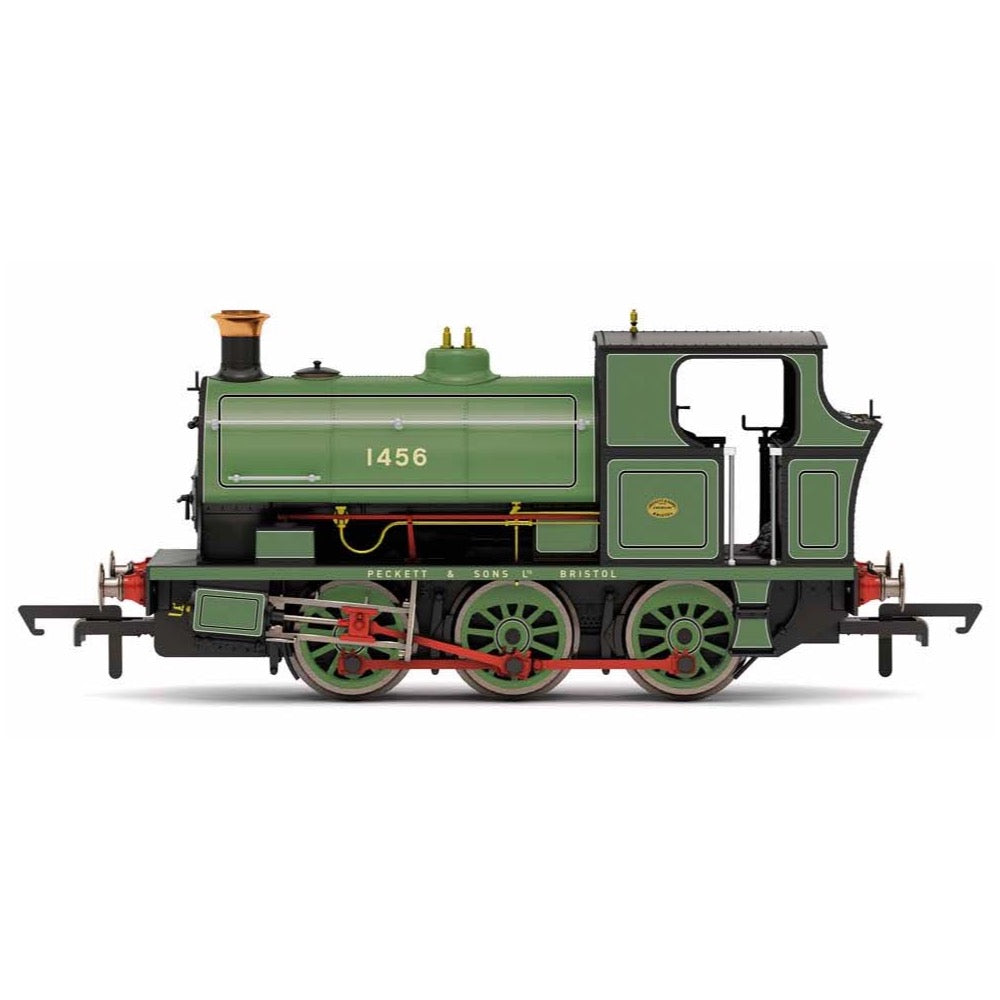
Hornby R3765 OO Bloxham & Whiston Ironstone Co. Ltd Peckett B2 Class 0-6-0ST 1456/1918 Locomotive
104.00
$
<p>Peckett 1456 was built in 1918 for the Bloxham & Whiston Ironstone Co. Ltd, a firm started by the Whiston Ironstone Co. Ltd in 1914 then becoming B&WI Co. Ltd from 22 December 1917. Following the First World War, ironstone was exploited as a resource and in 1918 the B&WI Co. Ltd were in possession of 191 acres of land in and around Bloxham.</p>
<p>The workings were short lived though, being abandoned by 1921 and 1456 was sold onto Stewarts & Lloyds Minerals Ltd, working the Harringworth Ironstone Quarries between 1923 and 1952 when the locomotive was scrapped.</p>
<h3>Specification</h3>
<ul>
<li>Item Length - Without Packaging (cm): 9.7</li>
<li>Item Height - Without Packaging (cm): 5</li>
<li>Item Width - Without Packaging (cm): 3.5</li>
<li>Item Weight - Without Packaging: 0.18</li>
<li>Item Scale: 1:76 Scale 00 Gauge</li>
<li>DCC status: DCC Ready 6 pin socket</li>
<li>Finish: Painted</li>
<li>Colour: Green</li>
<li>Gauge: OO</li>
<li>Operator: Private Owner</li>
<li>Designer: Peckett & Sons</li>
<li>Livery: Peckett, Works Green</li>
<li>Minimum radius curve: Radius 1</li>
<li>Motor: 3 pole skew wound</li>
<li>Number of Parts: 1</li>
<li>Class: Peckett B2</li>
</ul>
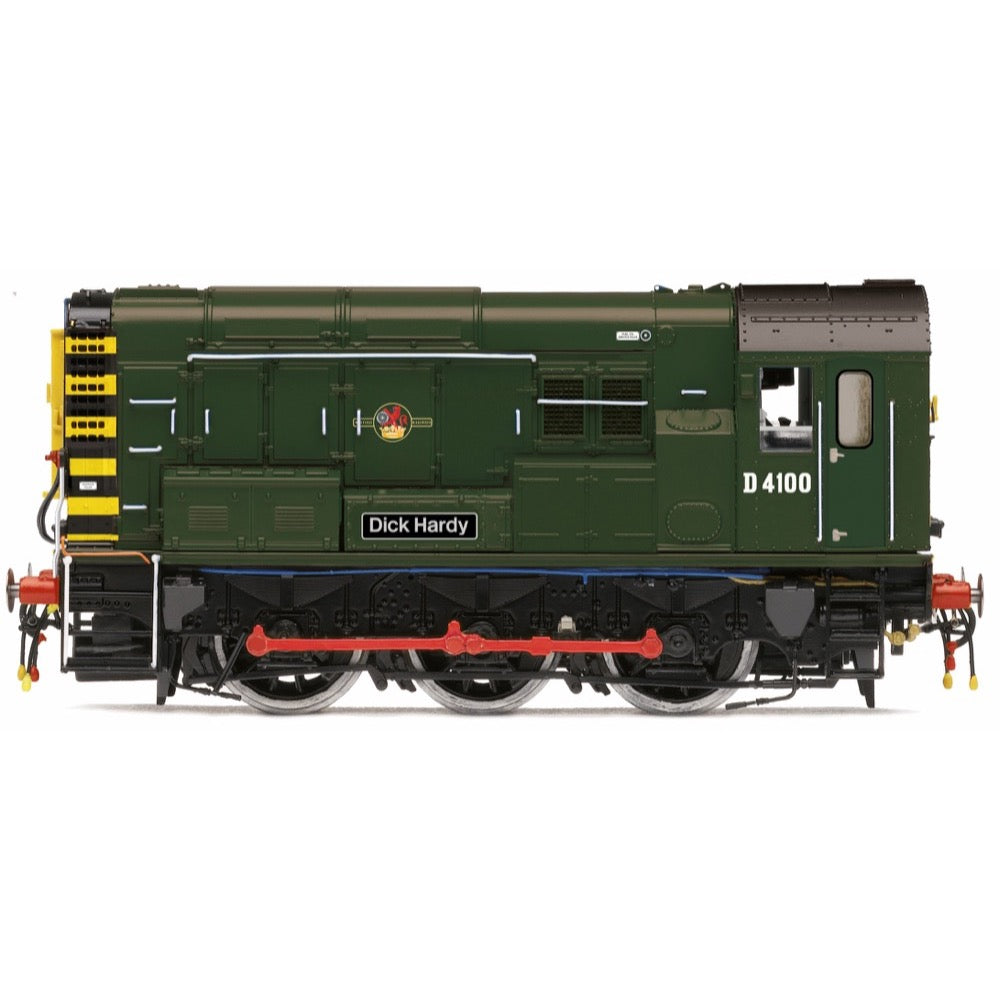
Hornby R30369 BR Class 09 0-6-0 D4100 Dick Hardy 2014 - 2024 Locomotive
162.00
$
<p>No. D4100 was constructed at Horwich Works and entered BR service in September 1961 at Ashford. After moving to various locations, it was fitted with air brakes in 1968 before moving to Selhurst in July 1970. It became No. 09012 under the TOPS numbering scheme in January 1974. The locomotive was named 'Dick Hardy' in honour of Richard 'Dick' Hardy who was a Divisional Manager with BR and oversaw various railway changes.</p><p>After retiring in 1982, Richard became an author and wrote about railway heritage. The locomotive was withdrawn from service on 31st July 2010 and saved for preservation. In 2013, the locomotive arrived at the SVR under No. 09012 in a Departmental Grey livery. The Class 09 locomotive was overhauled and had its 'Dick Hardy' nameplates refitted in 2014. A BR Green livery was applied to the locomotive in 2015. D4100 is normally based at Kidderminster and operates as a shunter.</p><p>Our model replicates the preserved vivid BR green livery on the prototypical Class 09. Waist-level brake hoses are incorporated on the cab front with ‘Dick Hardy’ nameplates applied on the bodysides. This model is DCC-ready and compatible with our HM7000 8-Pin decoder.</p><h3>Specifications</h3><ul>
<li>Item Length - Without Packaging (cm): 12.4</li>
<li>Item Height - Without Packaging (cm): 5</li>
<li>Item Width - Without Packaging (cm): 3.5</li>
<li>Item Weight - Without Packaging: 0.18</li>
<li>Item Scale: 1:76 Scale 00 Gauge</li>
<li>Finish: Painted</li>
<li>Colour: Green</li>
<li>Gauge: OO</li>
<li>DCC Status: DCC Ready 8 pin socket</li>
<li>Operator: BR</li>
<li>Designer: BR</li>
<li>Wheel Configuration: 0-6-0</li>
<li>Livery: BR Green</li>
<li>Minimum Curve (mm): Radius 2</li>
<li>Motor: 5 Pole Skew wound</li>
<li>Number of Parts: 1</li>
<li>Class: Class 09</li>
<li>Buffer Type: Metal Sprung Buffers</li>
<li>Coupling Type: NEM Couplings</li>
<li>Hornby Decoder Compatibility Primary: HM7000-8TXS: Bluetooth® & DCC Sound Decoder (8-pin)</li>
</ul>
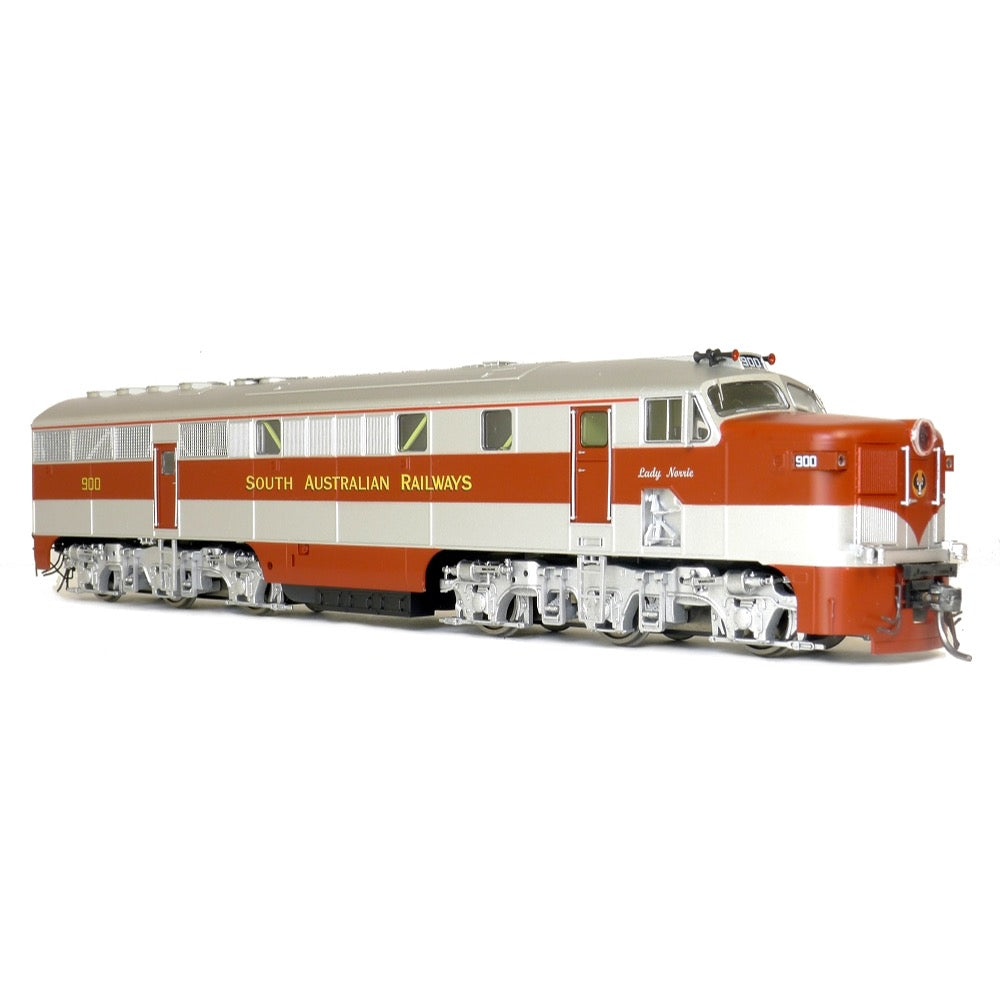
SDS Models HO SAR 900 Class Locomotive 909 DCC Ready
139.00
$
<p>Arguably the first of the streamliners, and Australian built mainline locomotives. The SAR 900 class diesel-electric locomotive were designed and built in-house by the South Australia Railways, they used English Electric V16 engines. English Electric also supplied the generators and traction motors.</p>
<p>The 10 units were delivered between 1951 and 1953, all were out-of-service by mid 1985.</p>
<p>900 Lady Norrie is preserved by the National Rail Museum, she also ventured across into Victoria to appear at Spencer Street station for the Aus Steam 88 festival. 907 and 909 were operated by SteamRanger tourist railway until 1995.</p>
<p><strong> We have produced 4 body variants for the 900 class:</strong></p>
<ul>
<li>Early service without large forward roof hatch with single Dynamic Brake fan shroud.</li>
<li>Early service with large forward roof hatch with twin Dynamic Brake shroud.</li>
<li>Late service with front twin sealed beam headlight.</li>
<li>Preservation with front and rear twin sealed beam light.</li>
</ul>
<h3>Features</h3>
<ul>
<li>Highly detailed Ready-to-Run HO gauge model</li>
<li>Precisely tooled plastic body (ABS)</li>
<li>Genuine Kadee scale head whisker coupler</li>
<li>Separately applied handrails and detail parts</li>
<li>5-Pole skew wound electric motor and dual flywheels</li>
<li>All wheel drive and electrical pickup</li>
<li>LED head and marker lights</li>
<li>All models come standard with an MTC 21 pin motherboard</li>
<li>Exclusive sound by DCCSound</li>
</ul>
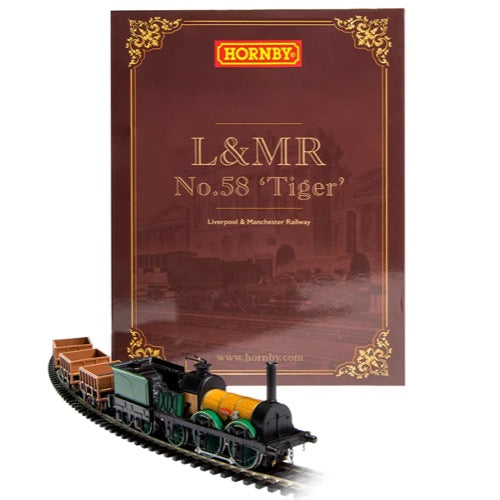
Hornby R30233 OO L&MR No. 58 Tiger Train Pack Locomotive
189.00
$
<p>Number 58 'Tiger' was the sister engine to 'Lion', one of a plethora of locomotives named after animals as became the norm for the fledgling L&MR. Like its sister engine, 'Tiger' was designed as a luggage engine and was delivered from Todd, Kitson and Laird alongside 'Lion', having been constructed at the same time as part of the same order, the first two locomotives to be built at the Railway Foundry in Leeds.</p><p>Information regarding 'Tiger' is scant, built to the same specifications it is a reasonable assumption that the engine would have served the same duties as its more notable sister, and also likely that the engine was also rebuilt at Edge Hill in 1841.</p><p>Likely still in service when the L&MR was absorbed into Grand Junction Railway and then the London and North Western Railway, 'Tiger' would gave also been renumbered under its new operator. Not in preservation, it is assumed that at the time 'Lion' was withdrawn and converted into a stationary pump 'Tiger' was also withdrawn and scrapped.</p><p>In this pack, 'Tiger' is paired with coal wagons of the kind that would often be found in the early days of the L&MR. Coal traffic was reasonably common in the early days of the railway, with the substance required for the running of locomotives.</p><p>Coal wagons were constructed in response to failings in the then current system of coal haulage, where separate coal containers would be loaded onto flat wagons and unloaded at the destination, a system which led to heavy wear on both the wagon and container and one that was phased out by 1833.</p><p>Tiger is a newly tooled locomotive, a Next18 decoder socket for DCC operation with a pre-fitted speaker allows this model to be enhanced on a digital layout. The locomotive itself features separately fitted brass details, a plethora of diecast and etched parts as well as a stunning electroplated boiler.</p><h3>Specifications</h3><ul>
<li>Item Length - Without Packaging (cm): 20</li>
<li>Item Height - Without Packaging (cm): 4</li>
<li>Item Width - Without Packaging (cm): 3</li>
<li>Item Weight - Without Packaging: 0.13</li>
<li>Item Scale: 1:76 Scale 00 Gauge</li>
<li>Finish: Painted</li>
<li>Colour: Multiple</li>
<li>Gauge: OO</li>
<li>DCC Status: Next 18 Socket (NEM 662)</li>
<li>Operator: L&MR</li>
<li>Designer: Robert Stephenson</li>
<li>Wheel Configuration: 0-4-2</li>
<li>Livery: L&MR Black and Wood</li>
<li>Minimum Curve (mm): Radius 2</li>
<li>Motor: 3 Pole Skew wound</li>
<li>Number of Parts: 4</li>
<li>Buffer Type: Moulded Dumb Buffers</li>
<li>Coupling Type: Chain</li>
<li>Hornby Decoder Compatibility Primary: HM7000-N18TXS: Bluetooth® & DCC Sound Decoder (Next18-pin)</li>
</ul>
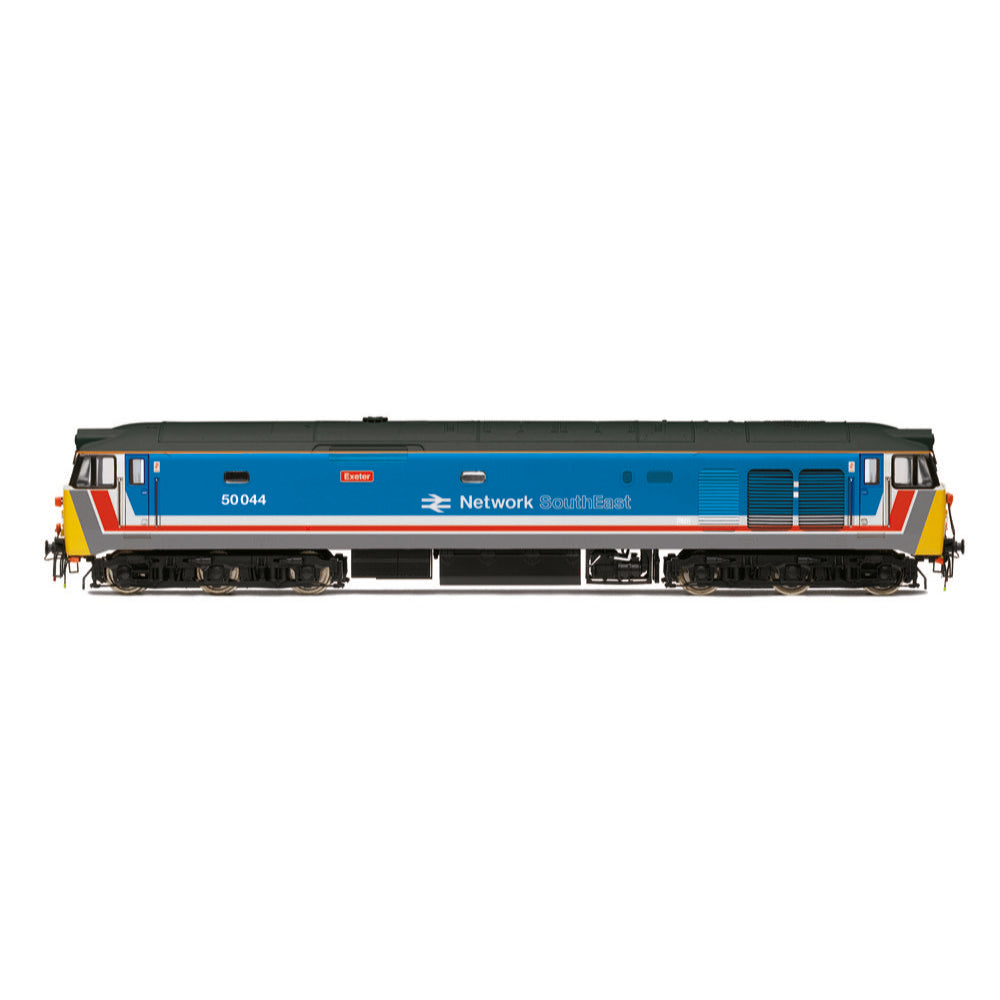
Hornby R30153 OO BR Class 50 Co-Co 50044 Exeter
146.00
$
<p>In 1974, 50044 was relocated to the Bristol Bath Road Shed where it received the name Exeter in 1978. In November 1980 it was relocated to Laira Depot in Plymouth.</p>
<p>In a nice mathematical and literary coincidence, precisely 50 of the Class 50 locomotives were built.</p>
<p>It was then withdrawn from BR service in January 1991.</p>
<h3>Specification</h3>
<ul>
<li>Item Length - Without Packaging (cm): 27.5</li>
<li>Item Height - Without Packaging (cm): 5</li>
<li>Item Width - Without Packaging (cm): 3.5</li>
<li>Item Scale: 1:76 Scale 00 Gauge</li>
<li>Finish: Painted</li>
<li>Colour: Blue</li>
<li>DCC Status: DCC Ready 21 pin socket</li>
<li>Operator: BR</li>
<li>Designer: English Electric</li>
<li>Livery: BR Network SouthEast</li>
<li>Minimum Curve (mm): Radius 2</li>
<li>Motor: 5 Pole Skew wound</li>
<li>Number of Parts: 1</li>
<li>Class: Class 50</li>
</ul>
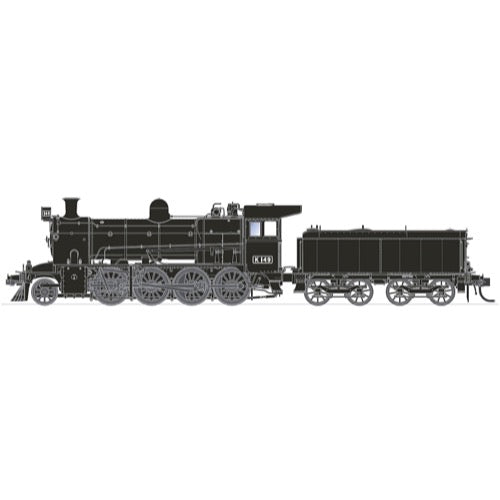
SDS Models HO K149 Victorian Railways Original K Class Locomotive
275.00
$
<p>The Victorian Railways built ten K class engines at Newport Workshops between 1922/23, numbered 100 to 109. They were originally put to work on branchline goods services, however they soon came to work all types of trains.</p>
<p>In 1940 they were renumbered to 140 to 149, later again they were rebuilt with Modified Front End. The models represent the original version and the renumbered version.</p>
<p>These models are being produced concurrently with the Phoenix Reproductions units and should be available Qtr3 2022.</p>
<h3>Features</h3>
<ul>
<li>Highly detailed Ready-to-Run HO gauge model</li>
<li>Precisely tooled body</li>
<li>Genuine Kadee scale head whisker coupler (Tender)</li>
<li>Separately applied handrails and detail parts</li>
<li>All wheel electrical pickup</li>
<li>LED headlights and marker lights</li>
<li>All models come standard with an MTC 21 pin motherboard</li>
<li>Keep Alive Circuit</li>
<li>Exclusive sound by DCCSound</li>
<li>22" Minimum radius recommended</li>
</ul>
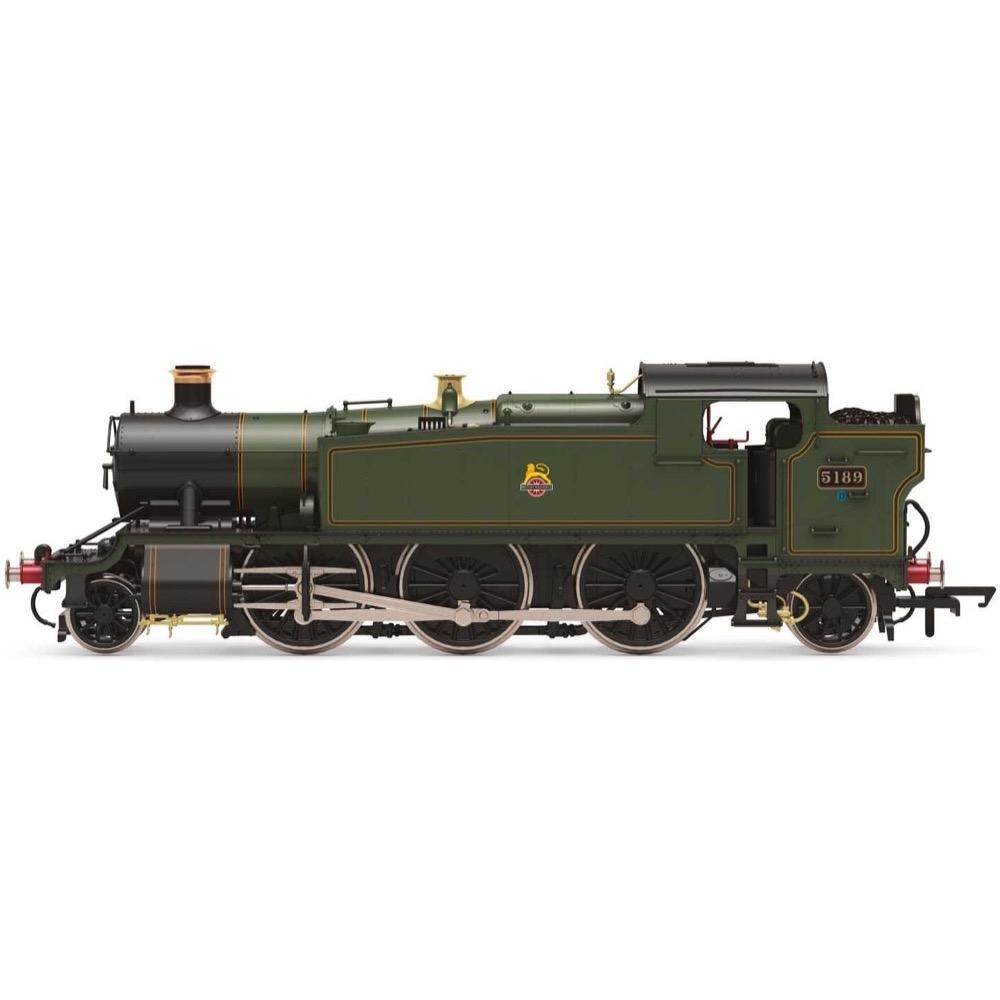
Hornby R3851 OO BR 51XX Class Large Prairie 2-6-2T 5189
141.00
$
<p>In 1903, George Churchward, Chief Mechanical Engineer of the Great Western Railway, embarked upon his locomotive improvement scheme with three types of 'standard' class engines, of which his 2-6-2T design was destined to become probably the GWR's most useful locomotive, lasting in traffic until the last month of Western Region steam operations in December 1965.</p>
<p>The Class prototype, No. 99, spent two years working across the GWR system and the lessons learnt from its performance were incorporated into the thirty-nine production locomotives of the 3100 Class, introduced during 1905/1906. At eighteen tons, they were designated as red route engines, initially being able to cover 42% of the GWR network. In 1927 experiments were undertaken to reduce the weight distribution of the class leading to the locomotives gaining blue route clearance and being renumbered in the 5111-5149 range, changing the class designation to 5100 in the process. At the same time as the 3100 class locomotives were being converted to 5100 class, further locomotives to the same design and blue route designation were built, designated as the 5101 class. 140 locomotives were built between 1929 and 1949, incorporating all the modifications applied to the 3100 class.</p>
<p>The need for new locomotives to work accelerated London suburban services at the beginning of the 1930s led to further development of the 5101 class, an uprated Standard 2 boiler being fitted to seventy new locomotives built between 1931 and 1935. Numbered in the 6100- 6169 range, they were designated as the 6100 class, being stationed at every London depot and replacing all other passenger tank locomotives except the auto-train fitted engines. It was only the reorganisation of the London suburban timetables in 1955 that led to some locomotives being transferred away from London and it was these examples that survived to the end of steam on the Western Region.</p>
<p>Built at Swindon Works under Lot No. 259 during April 1931, Diagram A9 Class 5101 'Large Prairie' No. 5189 entered traffic with the Wolverhampton Division, with all bar fifteen of the 5101 fleet of 'Large Prairies' forming the mainstay of the suburban passenger services until the early 1940s. On entering service with British Railways in 1948, 5189 was allocated to Stourbridge Junction, from where it would have mainly worked local services towards Birmingham, but the locomotive was one of the earlier withdrawals from traffic due to increasing use of Diesel units, being withdrawn at the end of August 1959.</p>
<h3>Specifications</h3>
<ul>
<li>Item Length - Without Packaging (cm): 16.5</li>
<li>Item Height - Without Packaging (cm): 5</li>
<li>Item Width - Without Packaging (cm): 3.5</li>
<li>Item Weight - Without Packaging: 0.22</li>
<li>Item Scale: 1:76 Scale 00 Gauge</li>
<li>License: No</li>
<li>Finish: Painted</li>
<li>Colour: Green</li>
<li>Gauge: OO</li>
<li>DCC Status: DCC Ready 8 pin socket</li>
<li>Operator: BR</li>
<li>Designer: Collett</li>
<li>Wheel Configuration: 2-6-2T</li>
<li>Livery: BR green</li>
<li>Minimum Curve (mm): Radius 2</li>
<li>Motor: 5 Pole Skew wound</li>
<li>Number of Parts: 1</li>
<li>Class: Large Prairie'</li>
</ul>


